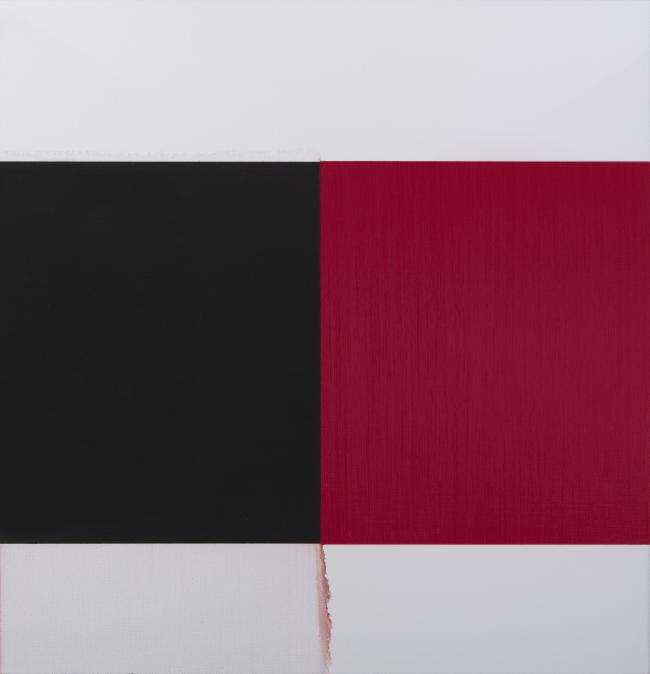(Popol Vuh) Seven-Times-The-Colour-Of-Fire: The ancient American mythology of The Popol Vuh Author: Weatherwax, John M. and Clara F., translators Place Published: Los Angeles Date Published: [1931] Description: Typescript in blue brad-bound folder. [9], 113 leaves (printed on rectos only). 28x21.5 cm (11x8½"). The first known English language translation of the Mayan sacred text, the Popol Vuh. John M. Weatherwax (1900–1984) was a writer and radical political activist whose papers are found at the Smithsonian Institution, the Newberry Library and at Cal State University Dominquez Hills. The translation was completed in 1931 to accompany watercolors by Diego Rivera for an illustrated edition pitched to Lippincott, but never published. His friendship with Diego Rivera began via an introduction by Upton Sinclair to Russian film director Sergei Eisenstein. Eisenstein would enlisted Weatherwax's help with the script for a film he was making on location in Mexico, "Thunder Over Mexico", asking Weatherwax to approach Rivera to secure the support and cooperation of the Mexican government for the film. Some years later in the Bay Area, Weatherwax, who had a lifetime interest in Pre-Columbian history, embarked on a translation of the Popol Vuh, the sacred text of the Maya first transliterated from the Ki'Che' language and translated into Spanish in 1701 by Dominican priest Francisco Ximénez. Fortuitously, Diego Rivera was also there, working on his celebrated mural "Allegory of California" for the Pacific Stock Exchange, at the time when Weatherwax and his sister Clara were working on the manuscript. Weatherwax told Rivera about the translation and from this was born the collaboration on "Seven-Times-The-Colour-Of-Fire", the one translating and the other illustrating the text. The present typescript, with pencil emendations, is the first known English translation of the Popol Vuh. Weatherwax would continue to translate Mayan stories and legends, some of which appeared in national magazines. The lot includes an essay by Lucretia H. Giese (1937–2018) former Associate Professor of Art History at Rhode Island School of Design titled "A Collaboration: Diego Rivera, John Weatherwax, and the Popol Vuh" and a receipt from Harcourts Gallery dated 02/12/86 conferring publishing rights to the consignor. According to Giese, "Weatherwax's knowledge and interests energized Rivera and Rivera's creativity stimulated Weatherwax in turn." This profound work, which may have had its origin in hieroglyphics, was reborn in a powerful modernist synthesis in the Rivera-Weatherwax partnership. Perhaps someday it will be published as such. Francisco Ximénez (c. 1666–1729) transliterated and translated the original text of the Popol Vuh. The original text, now lost, is thought to have been first committed to writing in the mid-sixteenth century. After the Dominicans were expelled from Guatemala in 1829-30, Ximénez's manuscript had a tangled history worthy of an Indiana Jones film—passing from the Universidad de San Carlos under murky circumstances to Abbé Charles-Étienne Brasseur de Bourbourg, to Alphonse Pinart, and ultimately to the American business magnate Edward E. Ayer. Ayer would donate the manuscript to the Newberry Library in Chicago as part of a nearly 50,000-piece bequest of Americana related to North and Central American native peoples. While documented by a representative of the Dominican order (largely responsible for the Inquisition) in an effort to convert the Mayan people to Christianity, the Popol Vuh has become a symbol of indigenous subsistence and for resistance to colonialism—not only for the Maya, but writ large in world literature. "Popol Vuh is one of the great books about the creation of the world. It is the Mayan Bible." –Carlos Fuentes. Condition: A few stains, some minuscule tears and creases at fore-edges of a few leaves, title page separated from braids; very good or better. Item#: 366377 Headline: Typescript of 1st English langua
(Popol Vuh) Seven-Times-The-Colour-Of-Fire: The ancient American mythology of The Popol Vuh Author: Weatherwax, John M. and Clara F., translators Place Published: Los Angeles Date Published: [1931] Description: Typescript in blue brad-bound folder. [9], 113 leaves (printed on rectos only). 28x21.5 cm (11x8½"). The first known English language translation of the Mayan sacred text, the Popol Vuh. John M. Weatherwax (1900–1984) was a writer and radical political activist whose papers are found at the Smithsonian Institution, the Newberry Library and at Cal State University Dominquez Hills. The translation was completed in 1931 to accompany watercolors by Diego Rivera for an illustrated edition pitched to Lippincott, but never published. His friendship with Diego Rivera began via an introduction by Upton Sinclair to Russian film director Sergei Eisenstein. Eisenstein would enlisted Weatherwax's help with the script for a film he was making on location in Mexico, "Thunder Over Mexico", asking Weatherwax to approach Rivera to secure the support and cooperation of the Mexican government for the film. Some years later in the Bay Area, Weatherwax, who had a lifetime interest in Pre-Columbian history, embarked on a translation of the Popol Vuh, the sacred text of the Maya first transliterated from the Ki'Che' language and translated into Spanish in 1701 by Dominican priest Francisco Ximénez. Fortuitously, Diego Rivera was also there, working on his celebrated mural "Allegory of California" for the Pacific Stock Exchange, at the time when Weatherwax and his sister Clara were working on the manuscript. Weatherwax told Rivera about the translation and from this was born the collaboration on "Seven-Times-The-Colour-Of-Fire", the one translating and the other illustrating the text. The present typescript, with pencil emendations, is the first known English translation of the Popol Vuh. Weatherwax would continue to translate Mayan stories and legends, some of which appeared in national magazines. The lot includes an essay by Lucretia H. Giese (1937–2018) former Associate Professor of Art History at Rhode Island School of Design titled "A Collaboration: Diego Rivera, John Weatherwax, and the Popol Vuh" and a receipt from Harcourts Gallery dated 02/12/86 conferring publishing rights to the consignor. According to Giese, "Weatherwax's knowledge and interests energized Rivera and Rivera's creativity stimulated Weatherwax in turn." This profound work, which may have had its origin in hieroglyphics, was reborn in a powerful modernist synthesis in the Rivera-Weatherwax partnership. Perhaps someday it will be published as such. Francisco Ximénez (c. 1666–1729) transliterated and translated the original text of the Popol Vuh. The original text, now lost, is thought to have been first committed to writing in the mid-sixteenth century. After the Dominicans were expelled from Guatemala in 1829-30, Ximénez's manuscript had a tangled history worthy of an Indiana Jones film—passing from the Universidad de San Carlos under murky circumstances to Abbé Charles-Étienne Brasseur de Bourbourg, to Alphonse Pinart, and ultimately to the American business magnate Edward E. Ayer. Ayer would donate the manuscript to the Newberry Library in Chicago as part of a nearly 50,000-piece bequest of Americana related to North and Central American native peoples. While documented by a representative of the Dominican order (largely responsible for the Inquisition) in an effort to convert the Mayan people to Christianity, the Popol Vuh has become a symbol of indigenous subsistence and for resistance to colonialism—not only for the Maya, but writ large in world literature. "Popol Vuh is one of the great books about the creation of the world. It is the Mayan Bible." –Carlos Fuentes. Condition: A few stains, some minuscule tears and creases at fore-edges of a few leaves, title page separated from braids; very good or better. Item#: 366377 Headline: Typescript of 1st English langua







/129196/Internet%20Image%201.jpg)


/32408/Internet%20Image%201.jpg)




Testen Sie LotSearch und seine Premium-Features 7 Tage - ohne Kosten!
Lassen Sie sich automatisch über neue Objekte in kommenden Auktionen benachrichtigen.
Suchauftrag anlegen